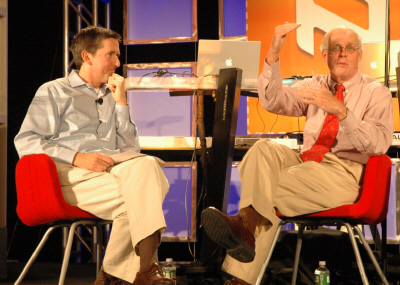AlwaysOn: Lessons from Stanford President John Hennessy


Tom Byers and Stanford President John Hennessy
Hennessy also discussed the need for multidisciplinary studies. Most universities are organized in silos, dating back to the 1500s. As an example of a problem that could benefit from multidisciplinary teams is ease of use. "The one nut we haven’t cracked is ease of use," he said. "It's still too hard to use the computer on my desk….no way to solve the problem until computer science and cognitive science get together to understand how humans work." The silos between disciplines need to be broken down and research teams need to be constructed to deal with these kind of problems, Hennessy said. "We have to figure out ways to break down the barriers and get people to work together," he added.
Regarding fund raising, Hennessy said: "What I learned about fund raising is that it depends on the quality of the ideas and the vision." He warned that if universities don't play a larger role, we as a civilization are in trouble, citing alternative fuels, stem cells and information technology as university research areas ripe for funding and study. "The innovation comes from a group of organizations dedicated to that."
In his tenure as president of Stanford, Hennessy (also a Professor of Electrical Engineering and Computer Science and entrepreneur) said his steepest learning curve has been around policy and government issues. "Government moves at a glacial pace...it's depressing sometimes to realize we can devote an enormous amount of effort to get things changed, and nothing can come of it." This situation is turning people off to government service, he said.
Byers asked Hennessy how companies can work with Stanford. "It comes down to personal relationships," Hennessy said. He noted that the researchers and graduate student provide the energy for innovation--the founders of Yahoo, Google and HP, to name a few, were graduate students at Stanford. "We are the mentors, the graduate students are the doers, who don’t see inhibitions to innovation," he said. "We are not good at competing with the industry--we are good at going beyond the industry horizon, solving next problem that’s down the road a bit."
One of the down-the-road innovations is autonomous vehicles, such as those that participated in the DARPA Challenge. He described the latest senor-laden vehicles as a tipping point for a new generation of cars, with accident avoidance systems that really work. He also mentioned energy technology: "Like smart people, I believe global warning is real." Bio science is also a key area of research. "I think this will be the century that bio sciences change our lives in ways that we could have never foreseen."